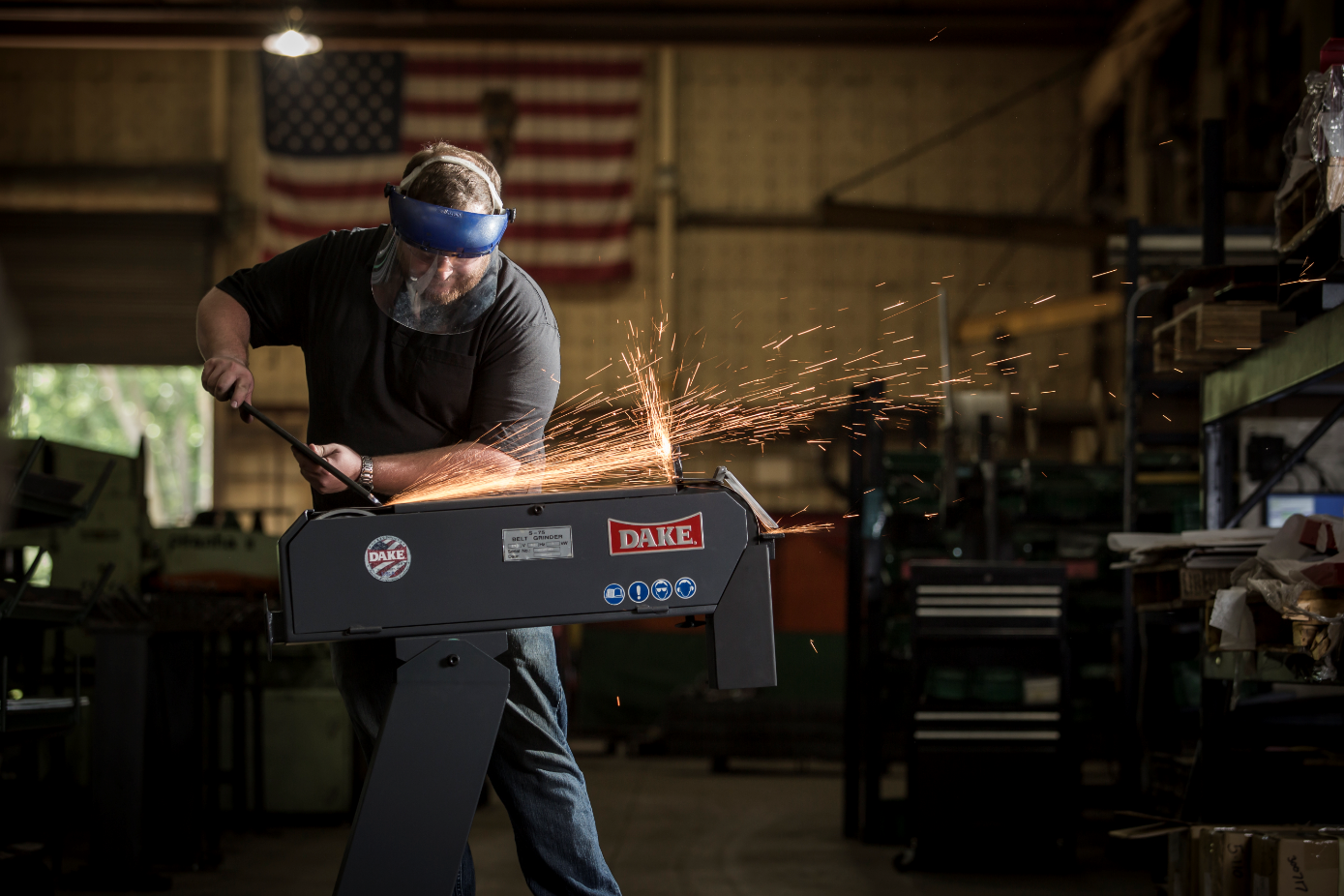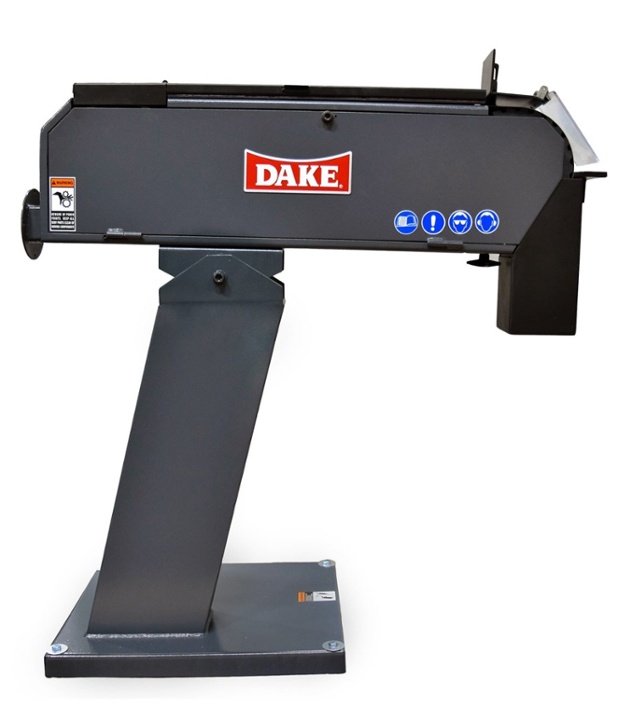One of the critical components of any metalworking shop is the belt grinder. A versatile piece of equipment, it is essential in machine shops, foundries, and fabrication shops--and also in the workshops of the weekend hobbyists.
Some of its applications include:
- Deburring edges (see the photo below)
- Radiusing corners
- Finishing rough surfaces
- Removing stock and tool marks
The burrs on this rectangular bar can be removed quickly with a high-quality belt grinder.
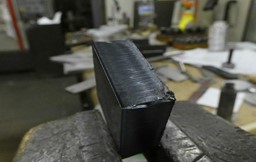
(Photo credit: PerezCamps)
Whether you intend to use it professionally or for fun, you'll need the right belt grinder. It will pay for itself quickly if you have been counting on a file to break those edges, and you will see a drastic improvement in quality if you are moving up from an inexpensive entry-level grinder.
Here are some questions you should get answered, so you are sure that you have the right belt grinder for your requirements:
What are the belt grinder's dimensions?
Belt grinders are often categorized by the width and length of the belt they require. In other words, a 2x72 grinder, one of the most common sizes, uses a belt that is 2" wide and 72" in circumference.
The wider the belt, the more friction you will apply to the platen when you're doing flat grinding. As a result, you'll need a machine with plenty of power if you are looking to remove lots of material with a bigger belt, such as the 3" x 79" belt found on a heavy-duty model from Dake.
What is the size of the motor?
When you grind steel to remove material, you must exert pressure and have a fair amount of speed on your abrasive belt. Both of these factors require a motor that can generate sufficient power.
For instance, the 2x72 grinder should do the job with a 2-horsepower motor. Smaller machines can get by with less horsepower. But if you want to take off serious amounts of metal with a large belt, you have to match it with a powerful motor, such as the 4-horsepower brute found on the Dake G-75.
The Dake G-75 Belt Grinder with its powerful 4 hp motor
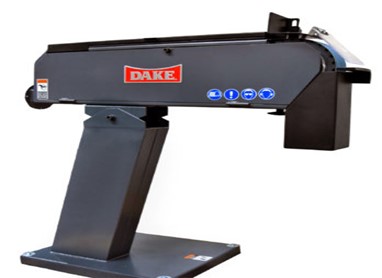
What is the belt speed in surface feet per minute (sfpm)?
The speed of your belt is another critical element when you're grinding steel. A metalworking belt grinder must move considerably faster than a wood sander to do the job correctly. For example, many 2x48 grinders are moving at around 4,000 surface feet per minute.
In contrast, the average wood sander requires something in the range of 2,500 to 3,200 sfpm. Now compare that with the G-75, a 3x79 machine with a grinding speed of 6,600 sfpm. That translates into maximum metal removal!
Do I really need a variable speed option?
Some machine manufacturers are touting variable speed as a beneficial addition to a grinder, albeit at a sometimes hefty additional cost. It begs the question: Do I actually need variable speed on my belt grinder? For an answer, watch this short video to find out what one shop owner thinks.
What can I expect to pay for a belt grinder?
You might think you have found the right belt grinder when you see the least expensive model, but that would mean you discounted some of the features listed above.
While you need to consider your budget when you are trying to determine which grinder is right for you, it's also essential to take into account the money you'll save with a high-quality piece of equipment and the extra life you'll get from it. Expect to pay between $1,500 and $5,000 for a belt grinder that meets those expectations.
What other features should I look for?
Here are some other qualities that could make your work easier, provide you with versatility, and keep you and your workers safe:
- Choose a machine that pivots up and down on the base for quick ergonomic work height adjustments.
- An adjustable parts rest and backing plate with Plexiglas shield to keep the material steady.
- Make sure it has a hinged top cover that you can open for access to the entire length of the belt for grinding larger pieces of metal.
- Check out the belt tracking. The front-wheel should be fixed, so it is rigid when you are grinding on the wheel radius. You don't want the belt tracking to be thrown off when you put pressure on it.
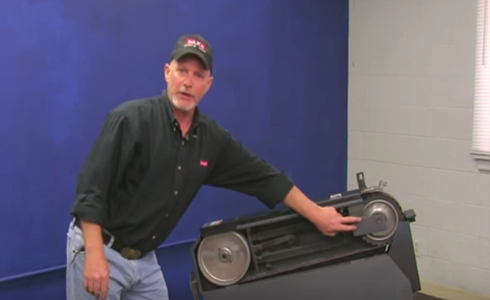
An operator pointing out the fixed front wheel on the Dake G-75 (Photo Credit: Dake)
Create a professional finish with the Dake G-75 belt grinder
The G-75 Dake belt grinder is the only model offered by the company, and it's the only one your company will ever need. Its versatility makes it the perfect machine for removing metal or giving it a mirror-like finish. There is no need to sacrifice comfort for utility because the base pivots up and down to your comfort level.
Check out the Model G-75 today, and start using a rugged, heavy-duty grinder in your business or home shop. Get all of your questions answered by one of the Dake experts by filling out our contact form, calling us at 1-800-937-3253, or sending us an email.
-1.jpg?width=1200&height=525&name=DAKE003_%20Logos_Red%20(002)-1.jpg)

